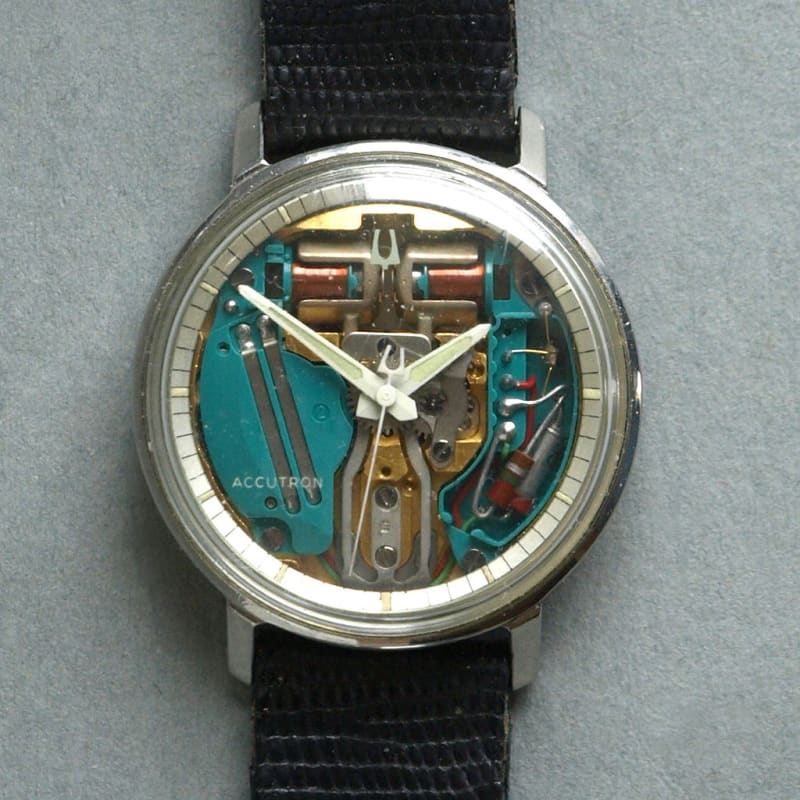Let me tell you about the fascinating technology used in tuning fork-watches. Please keep in mind, I am not a German Dipl. Ing. (Diplom Ingenieur) but a technical amateur interested in the concepts used.
The major one thing, that makes tuning fork watches and early quartz watches alike, so fantastic in my eyes, is the fact, they hold tight the moment of a very fast technological development from pure mechanical to completely electronical movements – and they show us the exact point of transcendence between both spheres, the electro-mechanical watch-movements.
This is like the moment in time, when dinosaurs left the stage and mammals took over;
this is like the moment in time, when ancient priests lost their power and ancient Greek polis took over;
Very short periods of time, that are changing the game completely.
OK, more on dinosaurs later, maybe, but in short, the tuning fork-watch technology works as follows: electromagnetic impulses stimulate a tiny tuning fork that vibrates at a rate of approx 300Hz. There were some working at a rate of 250Hz, Omega made it hum 300Hz and then there were some later working at a rate of 360Hz -- and even 720Hz, but this is a wonderful new story for a new blog post and these are excluded here.
The principle is the same: on one side of the vibrating tuning fork a small lever is fixed. This lever moves back and forth when the tuning fork vibrates and in every forward-impulse it pushes a small ratchet wheel by one teeth / position forward. Yes, just by the impulse from the vibrating tuning fork. But it will get even better. A fixed stop-lever snaps the cog wheel in its new position and prevents it from turning back.
Now, do you have a clue, how often per second this procedure happens, how often the lever bound to the tuning fork pushes the ratchet wheel one position forward in each second? Yes, correct, exactly as often as the frequency of the fork – so 300 times per second. This corresponds by the way, exactly to the number of teeth in this wheel and so it turns around completely one time per second. Now, isn’t this amazing!? Yes, for sure. And you know the size of this wheel? Less than 1.5mm in diameter -- total, not per tooth! WOW!
By the way, there is an old saying from an un-popular Basketball, Golf or Football player somewhere from the US west coast ;-):
When you come to a watch with a fork in it, use it. (Yogi Berra)
And there is a lot of truth in it.
The vibrating tuning fork could be heard, humming at the frequency it uses and furthermore, you can feel it: use your fingertips and hold it, preferably in a 18K gold case – YES, THIS IS IT!
The concept is not only fantastic but also very precise and very reliable. When you get such a watch, chances are high it is still working and doing so precisely. And one reason is, that its mechanics and the concept is relatively robust – variances in the tuning fork are absorbed by the ratchet wheel to a large degree --, also it is not oiled at all, since this would destroy this fine-balanced mechanism as well as a direct touch of the 1.2mm cog wheel. Pure Masterpieces!
